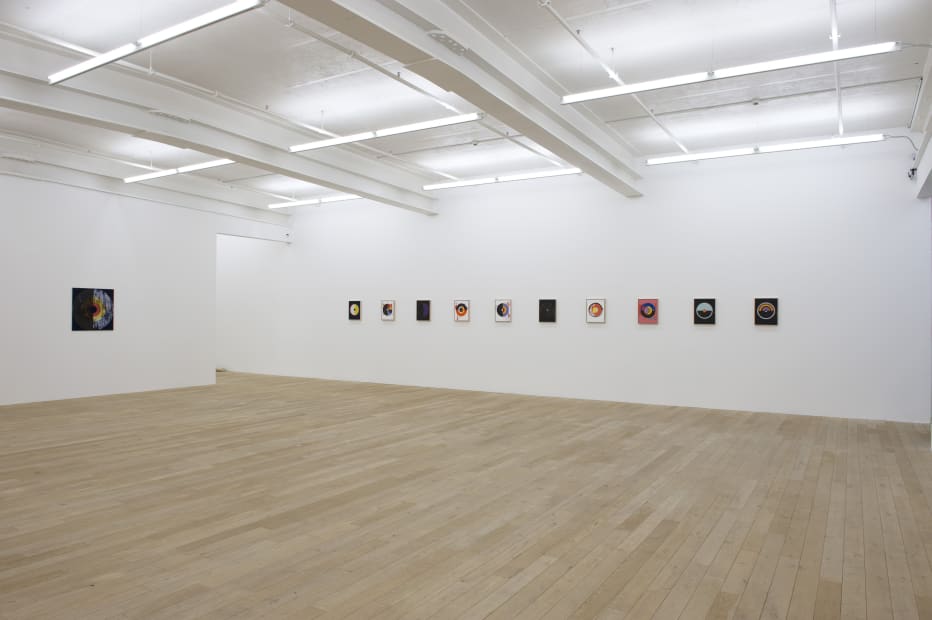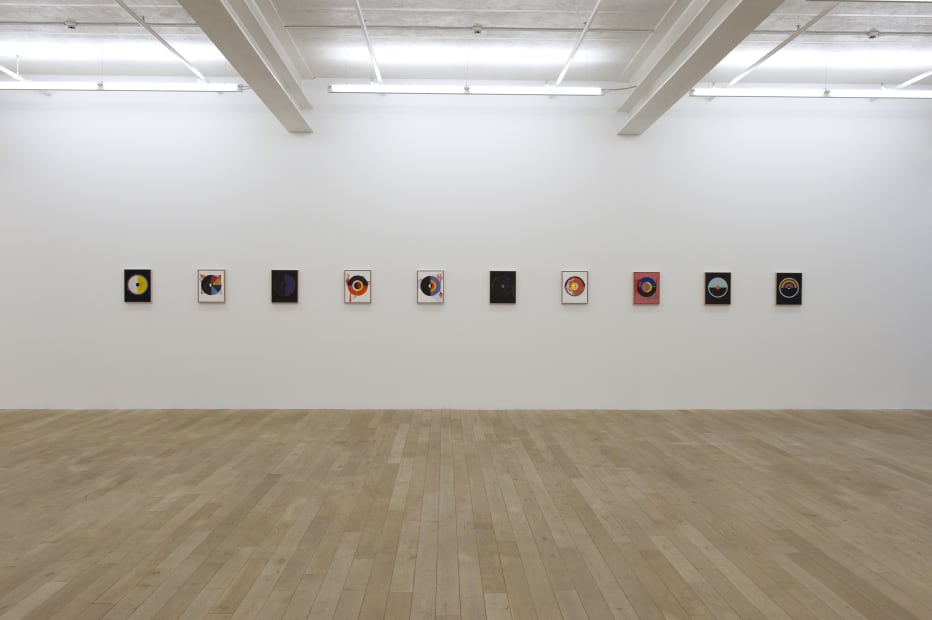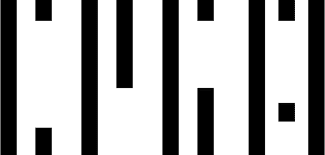Galerie Peter Kilchmann is pleased to present the third exhibition of Bernd Ribbeck. The artist was born in Cologne in 1974 and lives and works in Berlin. Ribbeck studied at the Hochschule der Künste in Berlin, the Akademie der bildenden Künste, Munich, and the Kunstakademie Düsseldorf under Helmut Federle from 1995 to 2003.
In the past, Bernd Ribbeck has created complex geometric paintings. Now for the first time the artist presents a series of several smaller and some larger paintings on MDF boards, with which he followed the idea of symmetry even more consequently than ever. Ribbeck used the number zero as his measuring unit to construct his images. The smaller canvases (each 37 x 30 cm), grouped in a block, show freestanding circles painted with acrylic and pigment marker on upright backgrounds (see invitation card). In the case of the larger paintings the circle fills out the quadratic format entirely (each 70 x 70 cm). Bernd Ribbeck finds the circle interesting because it is first and foremost a simple geometric figure, but it can also be understood as a symbol and a form filled with content. When trying to understand the figure of the circle, one quickly realizes how complex its nature is.
In mathematics, a circle is defined as the sum of all points on a plane with the same distance from a given center. Following this description, a circle is a curve and not a plane. Circles are similar to each other in nature. Since circumference and diameter are fixed, their quotient is described as the mathematical constant π. The number π (or Pi) is also called a transcendental number. In different spiritual doctrines the circle signifies eternity and completeness. In dream interpretation it is a symbol for ‘concentrated mental energy’. According to Persian lore, one’s biggest dreams will come true if one encounters a circle. However, this does not apply to crop circles. For a long time English farmers were sure that the circles in their cornfields were ‘vicious circles’, drawn by the devil.
The history of the circle can be traced ever further. Bernd Ribbeck, however, is not necessarily interested in the shape itself. He is primarily attracted to the simultaneity between a concrete form and an icon. The concentration on this one motif and its repeated examination in painting enables the artist to stay process-oriented in his work. Each completed painting acts as an answer, while simultaneously raising new questions, calling for more investigations. The promise of cognition and a utopian moment resonate in the paintings.
 Bernd RibbeckUntitled, 2012Acrylic and pigment marker on MDF70 x 70 cm (27.6 x 27.6 in.)
Bernd RibbeckUntitled, 2012Acrylic and pigment marker on MDF70 x 70 cm (27.6 x 27.6 in.) Bernd RibbeckUntitled, 2012Acrylic and pigment marker on MDF70 x 70 cm (27.6 x 27.6 in.)
Bernd RibbeckUntitled, 2012Acrylic and pigment marker on MDF70 x 70 cm (27.6 x 27.6 in.) Bernd RibbeckUntitled, 2012Acrylic and pigment marker on MDF70 x 70 cm (27.6 x 27.6 in.)
Bernd RibbeckUntitled, 2012Acrylic and pigment marker on MDF70 x 70 cm (27.6 x 27.6 in.) Bernd RibbeckUntitled, 2012Acrylic and pigment marker on MDF37.5 x 30 cm (14.8 x 11.8 in.)
Bernd RibbeckUntitled, 2012Acrylic and pigment marker on MDF37.5 x 30 cm (14.8 x 11.8 in.) Bernd RibbeckUntitled, 2012Acrylic and pigment marker on MDF37.5 x 30 cm (14.8 x 11.8 in.)
Bernd RibbeckUntitled, 2012Acrylic and pigment marker on MDF37.5 x 30 cm (14.8 x 11.8 in.) Bernd RibbeckUntitled, 2012Acrylic and pigment marker on MDF37.5 x 30 cm (14.8 x 11.8 in.)
Bernd RibbeckUntitled, 2012Acrylic and pigment marker on MDF37.5 x 30 cm (14.8 x 11.8 in.)












